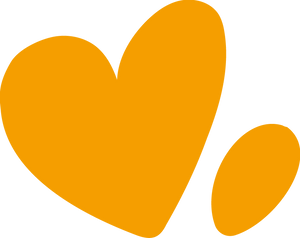
EVERYTHING TO KNOW ABOUT
Orchid Care

This site has limited support for your browser. We recommend switching to Edge, Chrome, Safari, or Firefox.

Orchid Care

First things first, remove your orchid from the outer cardboard box and remove the protective wrapping and sleeve from your orchid. Don’t leave your orchid still in its cardboard box or plastic film for more than a day, give them the fresh air they deserve as soon as you can!
Did you know? Our orchids are grown right here in the UK so your new plant is helping people enjoy plants without a huge CO2 transport footprint from importing from Europe.

Position your orchid in a bright room or on a windowsill, but one that does not receive direct sunlight. Don’t place the plant near a radiator or a draught.
Did you know? Phalaenopsis orchids are sensitive to the ethylene gas produced by ripening fruit. If you place your plant too near a fruit bowl, it may drop all of its flowers.

You should water your Phalaenopsis orchid once a week. The best way to do so is to dunk the whole pot into a sink or bowl of water. If you have time, leave the pot submerged for a few minutes — this will allow the root system to absorb all the water it needs. Alternatively, run the pot under a tap for around 20 seconds, allowing water to drain through the bottom. You’re fine to use tap water, even if you live in an area with very hard water — Phalaenopsis orchids are extremely versatile and will adapt to any water source. Don’t leave the roots standing in water for long periods of time, as they will most likely rot
Did you know? If you can’t remove your plant from its decorative container, you can keep it watered by placing one or two ice cubes at the base of its stem once a week.

Dry, shrivelled roots protruding from the bark can be cut off without harming the plant.
Though your Phalaenopsis orchid will survive without fertiliser, we recommend feeding it once every four weeks. Don’t be alarmed if lots of roots start growing out of the top of the pot — this is perfectly natural
Did you know? If you don’t have dedicated orchid feed, a high-potash fertiliser like Tomorite will do the trick. Just be sure to dilute it to a quarter of what it says on the label.

When your orchid drops its flowers, you can cut back the stem. It doesn’t matter what height — generally speaking, lower down means a larger bloom but longer to develop. Cut back when there’s at least one flower left, so the stem is active. If it’s already dried out, cut near the base of the plant. For a ‘quick fix,’ cut above the node below the last, lowest branch or flower for fast development.

You should repot your orchid every 4-5 years, or earlier if the bark has begun to compost down. Otherwise, repotting isn’t necessary unless your plant is jumping out of its pot. It may take a week or two for a repotted plant to become stable, and don’t worry about gaps in the bark — orchid roots love air as much as they love water.



